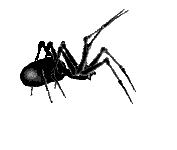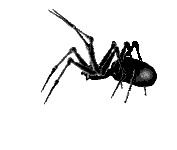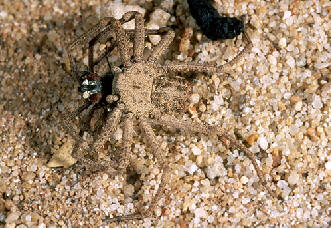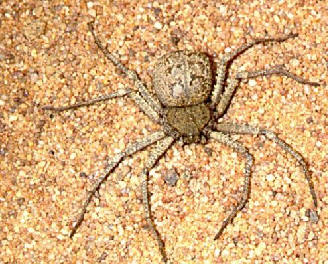 Six
Eyed Sand Spider
Six
Eyed Sand Spider

|
The Six Eyed Sand Spider is a medium-sized spider found in deserts and other sandy places in southern Africa. Due to its flattened stance and laterigrade legs, it is also sometimes known as the six-eyed crab spider. The Six Eyed Sand Spider does not roam in search of prey, it simply lies in wait for an insect or scorpion to pass by. When one does, it seizes the prey with its front legs, kills it with venom and eats it. They do not need to feed very often, an adult Six Eyed Sand Spider can live without food or water for a very long time. It hunts by ambush rather than by spinning a web. Unlike most ambush hunters, it does not dig a burrow. Instead, it buries itself just under the surface of the sand and strikes from ambush at prey that wanders too closely. Sand particles adhere to cuticles on its abdomen, thus acting as a natural camouflage if uncovered. If disturbed, it will run a short distance and bury itself again.
The Six Eyed Sand Spider is covered in small hairs, called setae (a stiff hair, bristle or bristle-like process or part of an organism), which serve to hold particles of sand. This provides effective camouflage even when the spider is not buried. It has a body length up to 0.6 inches (15 millimetres) and the width across the legs is about 2 inches (50 millimetres). Most species are reddish-brown to yellow in colour without any distinct patterns. Six Eyed Sand Spiders often camouflage themselves with sand particles wedged between body hairs in order to blend into the background of their specific habitat.
The Six Eyed Sand Spiders are shy and secretive, however, they will bite when accidentally contacted. Further, like most spiders, it does not always inject venom with every bite, nor, even when it does, does it necessarily inject a large amount. Studies of its venom have led some to recognize this spider's bite as the most dangerous on record. Toxicology studies have demonstrated that the venom is particularly potent, with a powerful hemolytic/necrotoxic effect, causing blood vessel leakage and tissue destruction. Envenomations of laboratory animals have yielded devastating results, with many of the test subjects developing multiorgan breakdowns. There are no confirmed bites in man and only two suspected ones. However, in one of these cases, the victim lost an arm to massive necrosis and in the other, the victim died of massive haemorrhaging. Unlike the dangerous neurotoxic spiders, no antivenom currently exists for the bite of this spider, leading many to suspect that a bite by this spider is likely to produce a fatality. |


